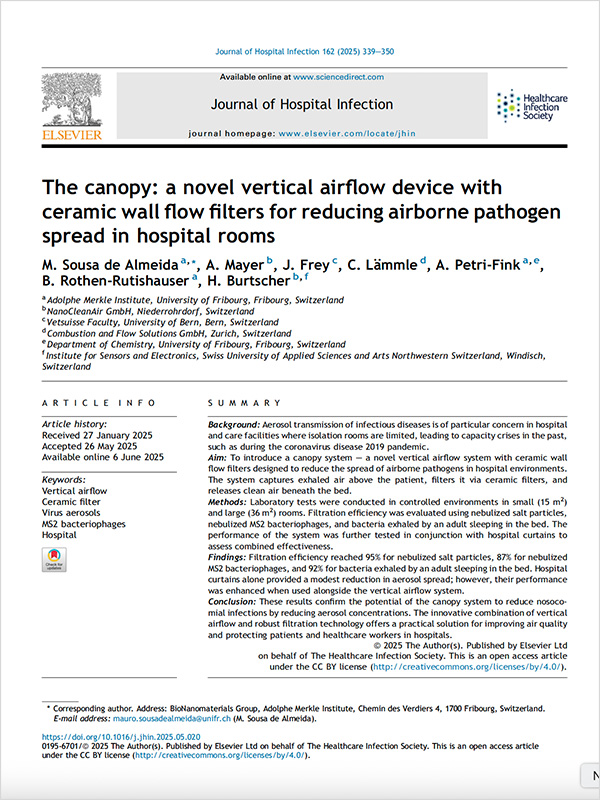Journal of Hospital Infection 162 (2025) 339—350
The canopy: a novel vertical airflow device with ceramic wall flow filters for reducing airborne pathogen spread in hospital rooms
M. Sousa de Almeida, A. Mayer, J. Frey, C. Lämmle, A. Petri-Fink, B. Rothen-Rutishauser, H. Burtscher (2025)
Article (Open Access)
Summary
Background
Aerosol transmission of infectious diseases is of particular concern in hospital and care facilities where isolation rooms are limited, leading to capacity crises in the past, such as during the coronavirus disease 2019 pandemic.
Aim
To introduce a canopy system – a novel vertical airflow system with ceramic wall flow filters designed to reduce the spread of airborne pathogens in hospital environments. The system captures exhaled air above the patient, filters it via ceramic filters, and releases clean air beneath the bed
Methods
Laboratory tests were conducted in controlled environments in small (15 m2) and large (36 m2) rooms. Filtration efficiency was evaluated using nebulized salt particles, nebulized MS2 bacteriophages, and bacteria exhaled by an adult sleeping in the bed. The performance of the system was further tested in conjunction with hospital curtains to assess combined effectiveness.
Findings
Filtration efficiency reached 95% for nebulized salt particles, 87% for nebulized MS2 bacteriophages, and 92% for bacteria exhaled by an adult sleeping in the bed. Hospital curtains alone provided a modest reduction in aerosol spread; however, their performance was enhanced when used alongside the vertical airflow system.
Conclusion
These results confirm the potential of the canopy system to reduce nosocomial infections by reducing aerosol concentrations. The innovative combination of vertical airflow and robust filtration technology offers a practical solution for improving air quality and protecting patients and healthcare workers in hospitals.

